Since my birthday coincided with the adoption of a stray dog, I looked for a pet-friendly place to celebrate and settled on Yosemite National Park. After all, what dog doesn't love the great outdoors?

This one.
Thousands of trees to pee on and what does he go for? Trash cans, cable boxes, pavement.
More surprising, though, was the discovery that Yosemite is a rather dog un-friendly park. A NO PETS sign greeted us at the trialhead of Mariposa Grove, an enclave of Giant Sequoias.
But we took him anyway.
Here's what we saw:
The Grizzly Giant
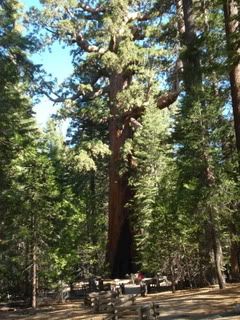
Yes, those are people down below.
According to the Mariposa Grove trail guide, the Grizzly Giant is about 2,700 years old -- one of the oldest living sequoias in the world.
The Clothespin Tree

Numerous forest fires carved this hole in the Clothespin Tree.
The California Tunnel Tree
A hole was cut through this tree in 1895 for stagecoaches to pass through.
(Because going around the tree was too complicated, apparently)
The Faithful Couple

These two trees grew so close together they fused at the base.
The Fallen Monarch
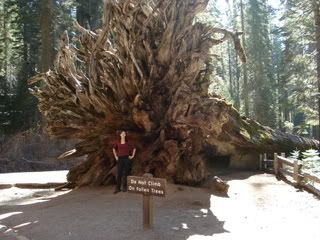
As you can see, the roots of the giant sequoia are wide and shallow; their shape maximizes the amount of surface water accessible to the tree and stabilizes the tree's large trunk.
Big Dude in an even Bigger Tree

Holy shit.
This cross-section of a fallen sequoia puts the age of these trees into perspective -- the third green marker from the top indicates the size of the tree during the Civil War:
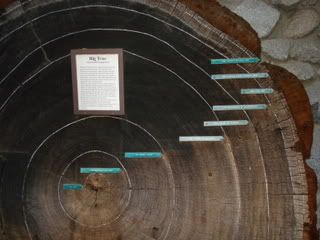
The giant sequoia, or sequoiadendron giganteum, is one of the three species of redwoods; the others are the Dawn Redwood (China) and the Coast Redwood (coastal California). Giant Sequoias are the largest living things in terms of volume (Coast Redwoods are the tallest; Bristlecone Pine is the oldest).
Forest fires are necessary for the survival of giant sequoias - they clear away brush and smaller trees that compete with the sequoias for water and sunlight. Also, fire plays a key role in the reproduction of the giant sequoias by drying out their cones and releasing seeds, which then fall to the ground.
After the Mariposa Grove, we drove into Yosemite Valley to see the park's famous rock formations:
Tunnel View
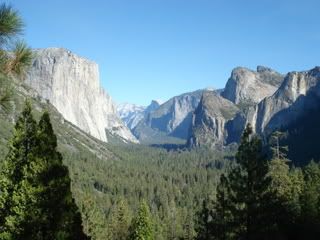
(El Capitan on the left, Half Dome on the right)
El Capitan

Half Dome

Sentinel Rock
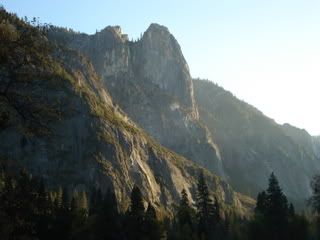
These formations were created by glaciers, which crept through Yosemite Valley one million years ago and eroded the granite rock along its joints.
We didn't get to see Yosemite's famous waterfalls, because they're dry in the Fall.
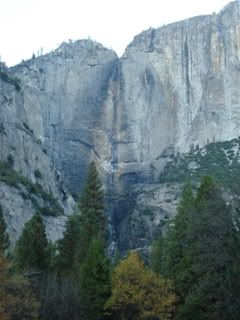
Yosemite Falls (Dry) - the highest waterfall in America.
April and May are the best time to see them -- right after the winter snow melts.
And now, a pleasant surprise:
Should you perish on your journey through Yosemite's wildnerness, rest assured that your remains will be safe from scavengers -- Yosemite has its own cemetery!

Filled with fellow travelers who have met certain doom, such as . . .
A boy
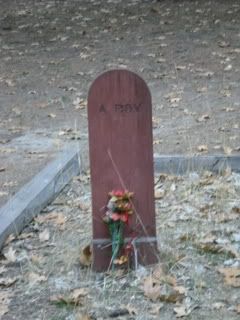
Believed to be John Morgan Bennett. He drowned attempting to cross the Merced River by mule in 1870.
A Frenchman
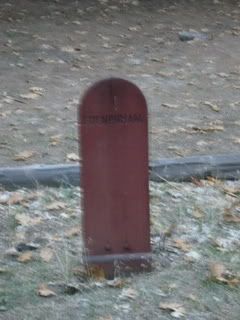
May have been Etienne Manet, a "slightly demented" orchard owner who was found dead in his cabin.
Some dude from Boston
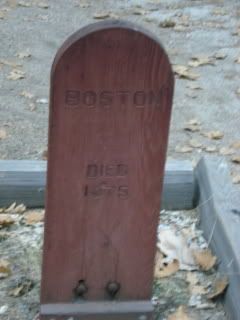
Er, George Ezra Boston, a native of Virginia, who died in 1875 in an arson fire believed to have been set by a "notorious Indian scoundrel" named Piute George.
...and a whole bunch of others, as documented in the Guide to the Yosemite Cemetery by Hank Johnston and Martha Lee, available for $3.50 from the Yosemite Bookstore, or on loan from the nearby Visitor's Center.
The cemetery was established in 1870 on the same ground used for centuries by the Miwok people to bury their dead.
Death and history kept me occupied until dusk, so we returned to the park the next day and drove to Glacier Point for a magnificent view:
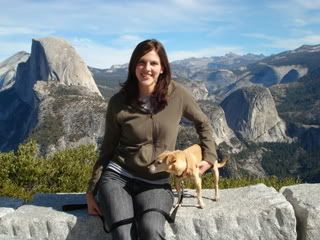
We then started walking the four mile trail that leads from Glacier Point down to the Valley, but the dog started wheezing so we turned back. It was a phenomenal hike, though -- the view couldn't be captured on my measly digital camera, but I gave it a shot anyhow:
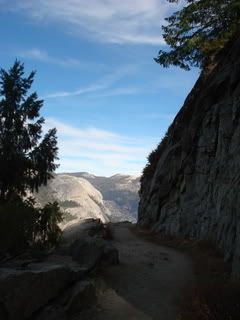
Glacier Point is 7,200 feet above sea level, and 3,200 feet above Yosemite Valley. If you're thinking about visiting, please note that the road to Glacier Point is closed in the winter (November-May).
After Glacier Point, we drove back into the valley and stayed until sunset. I'll leave you now with a random shot of Yosemite at dusk:
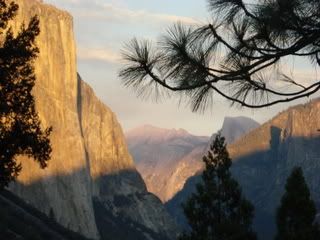
Nice way to end the day.

No comments:
Post a Comment